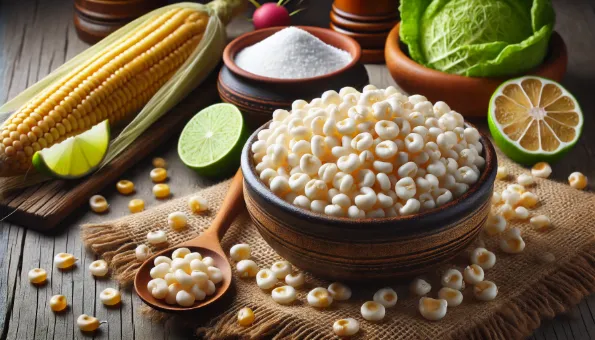Hominy: Nutrition, Benefits and Uses
Hominy is corn processed through nixtamalization, rich in fiber and complex carbs, perfect for hearty meals.

Introduction
Hominy is corn that has been soaked and cooked in an alkaline solution (nixtamalization), enhancing its nutritional value and digestibility. This traditional technique originated in Central America and has been used for centuries.
Nutritional Values
Per 100 g of cooked hominy: **72 kcal**, 1.5 g protein, 0.5 g fat, and 16 g carbohydrates. It is rich in **fiber** and complex carbs, and contains magnesium, phosphorus, vitamin B3 (niacin), and small amounts of calcium.
Benefits
- **Supports digestive health** due to high fiber content
- **Provides long-lasting energy** from complex carbs
- **Improved niacin bioavailability** through nixtamalization
- **Gluten-free**, suitable for celiac diets
- **Versatile ingredient** for traditional and modern dishes
Possible Drawbacks
Hominy is relatively high in carbohydrates, so it should be consumed in moderation on low-carb diets. Commercially processed hominy may contain added salt.
Culinary Uses
Hominy is used in dishes like **pozole** (Mexican stew), soups, casseroles, salads, and side dishes. It can be fried for crunchy snacks or ground into grits for tortillas and tamales.
Fun Fact
Nixtamalization dates back to the Maya and Aztec civilizations, who used it to boost the nutritional value of corn.
- 1. Hominy
sušeno zrno kukuruza obrađeno nixtamalizacijom

